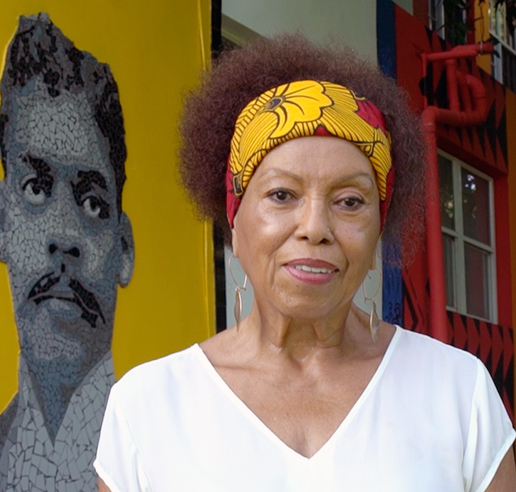About Me
Quisque dictum nunc at mi varius tincidunt. Nunc at nisl ac diam convallis pulvinar vitae nec mauris.
Recent Posts
-
Getting to the Heart of the Photograph
November 9, 2020 -
The Unexpected Path to Everyday Creativity
November 9, 2020
- Home
- /
- ABOUT NEGRO/A/X
ABOUT NEGRO/A/X

DRA. MARTA MORENO VEGA
Co-founder Corredor Afro
The Co-Founder's Perspective
An elusive creative sacred aesthetic impulse in the philosophy, traditions and expressions of African Diaspora communities is culturally grounded in the ancestral African practices that are seeded throughout the world.
In Aesthetic of the Cool Afro Atlantic Art and Music, Robert Farris Thompson weaves together the thought, philosophy, and art that continues to be infused within our global cultural practices. The visionary work of Puerto Rican-born, Arturo Alfonso Schomburg in his pioneering research for the global study of African cultures in the Americas was the first to call for the study of the “Negro” in institutions of higher learning. He advocated for the development of African Studies Departments that were to be charged with the recovery of our global experiences before and post enslavement. His life’s work provided the linkages and guideposts that artists, researchers and scholars have used to develop a matrix of creative understanding of the universal contributions made by Africans. According to historian Melville Herskovits, the differences that existed among the various African ethnic groups were significantly less important than the similarities inherent in their philosophical-cosmological vision of the world.
It has been an arduous road that we have traveled, hidden from the sight of our oppressors and, bringing our cultural and artistic creative vision to the fore. It is clear that there is an aesthetic sensibility asé, that engages our ancestral legacies and histories of colonialism and enslavement.
“The concept of àse remains in the worldview of Africans in the New World. Abiodun (1994.71) refers to àse as the most important ‘religio-aesthetic’ phenomenon to survive transatlantic slavery.”
Embracing the ancestors of our legacies, The Black Arts Movement, and the Nuyorican Movement of the ‘70s and ‘80s responded to the call of the Civil Rights and Black Power Movement for racial and social justice. Today our artists continue to manifest the call of the Movement for Black Lives for racial and social equity, grounded in the aesthetic of ase.
This exhibition is an example of the aesthetic of ase and cultural certitude, unapologetically centering our Afro Boricua experience within our local and global imperative. It asserts an aesthetic of certitude grounded culturally in our legacy. It is the active forging of change, removing the aesthetic of European dominance, and building one that values the spectrum of cultural values that define our reality.
The Transatlantic African Aesthetic
The power of memory and the insistence of maintaining the legacy of our ancestors has persisted wherever Africans were taken. The ingrained memory carried in the bodies of our ancestors has protected and infused our intelligence with the powers of creativity, philosophies of sustainability, resistance and renewal, forging a world view and aesthetic that is culturally grounded in our people’s experience.
This exhibition, the activities and programs of Corredor Afro is disrupting Eurocentricity and embracing a freedom of our communities grounded in the aesthetic of ase and certitude.
The Aesthetic of Asé and African Certitude
These illicit partnerships enforcing horrific atrocities enabled historical knowledge and memory to evolve into a philosophical thought system of affirmation, resistance and creative reconfiguration of the knowledge they brought ingrained in their sacred heads and bodies.
There are deep-seeded connections among African Diaspora descendants that are directly connected to their root traditions in West and Central Africa. This is true for Puerto Rico.
A Narrative of Cultural Centering
The Africans who were brought into the Americas to toil without compensation for the wealth of their white enslavers bravely knew to sustain and pass on practices that centered their ancestral knowing, coupled with the skills for survival that were acquired in their new circumstances that define the certitude of our personhood and vision.
Documentation confirms that the distribution of different ethnic African people had to reimagine their lives in a system of abusive enslavement that tore families apart and systemically oppressed African belief systems and cultural mores that did not support their enslavers’ beliefs and practices. There were also Catholic priests assigned to baptizing the human cargo.
This system, replicated by other enslavers, was the imposition of cultural domination and the process of dehumanization. It was cultural erasure. But what we know—what we stand as the living proof of—is the fact that enslavers were not able to infiltrate the minds of Africans.
The Movement for Black Lives’ imperative, fueled by the murder by police of George Floyd, Breonna Taylor, and vigilante murder of Ahmaud Aubry has resonated globally. It is reflected in the police killing of Adolfina Villanueva in the community of Tocones when she refused to be displaced from her home. We have lost too many others that have been murdered for living Black. The certitude for Black communities globally to connect their common cultural legacies and bridge the philosophies, beliefs systems, and practices that bridge our common NEGRO/A/X aesthetic visions is imperative.
Gracias to Celso Gonzalez, our exhibitions curator for bringing together a visionary exhibition bridging a cross generation of artists to narrate our visual journey.
Gracias, to our artists for standing strong cultural honoring that which has sustain our history and artistic centeredness under conditions and policies that have sought to erase us.
Gracias to Olga Chapman Rivera and her team at BRAVEE Tribu Collab for the creative concepts, design, tech planning and interactive experiences that allowed us to share this exhibition with the world.
To Lisa Soto, much appreciation for joining the team and your integral contribution, Rachel Pérez Puig your photography was amazing, thank you, Carlos Roca and 3D Imaging Solutions for supporting our 3D viewing room.
Thank you to our community! The community of Teraplén, Piñones, Loíza and everyone in Puerto Rico and Puerto Rican diaspora around the world for standing strong, cultural warriors that have kept our spirit and traditions alive.
Marta Moreno Vega
Co Founder Corredor Afro

CELSO GONZÁLEZ
NEGRO/A/X Exhibition
NEGRO was the first idea/word/concept/ construction that came to mind when I thought of this exhibit. NEGRO has become a fundamental word, also controversial, sometimes offensive, sometimes loving, controversial and full of stigma, other times colorful and passion. In this proposal we use the multiple definitions, connotations and meanings of NEGRO to begin a journey through aesthetic, cultural, personal and collective blackness. On the other hand, gender is integrated as a fundamental element in the multiple meanings of NEGRO by including O/A/X in the name proposal. With NEGRO/A/X we raise the discussion of black in all its manifestations.
NEGRO/A/X presents works that explore multiplicity, materiality, and the many shades of Black. In an important way we wanted to represent with the artists, (who accompany us) a diversity of media, images, generations and moments of professional development. Our sample includes new artists, established artists and others who are already part of the local and international artistic culture.
In this process we are seduced, motivated and released by the thousand possibilities of the NEGRO, as an element of color and design in the pieces and installations, as a word used in so many exalted and despicable ways, as a social construction and definition about our race of what we are in all aspects, cultural and socio-political. The greatness of the African continent speaks in us, it is manifested in all our knowledge and, in wisdom, flow, creativity and obviously in our artistic production.
The movements of social justice, pro blackness, pro human rights of NEGROS / as / es; it causes more and more people to identify themselves as black. We live in a very exciting time that generates an incomparable artistic production. What we are has always raised passions and our passion is manifested in an exhibition that tells of what we are, what has become a passion for art.
The exhibition includes 20 artists presenting their creative projects, their paintings, sculptures and installations; attending from each of its fronts and trenches its interpretation of its experience, history and experience with blackness. We are pleased to present in the exhibition a perspective where a particular aesthetic is clearly appreciated, a Caribbean aesthetic and clearly AFRO. The artistic expression that comes from the depths of who we are.
Project funded by




